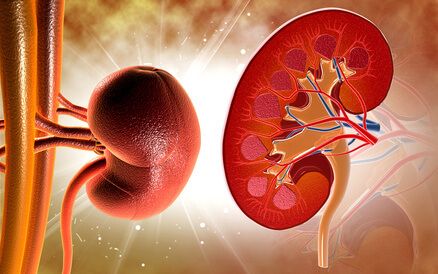The risk of contrast induced kidney injury is significantly lower in patients receiving transcatheter aortic valve replacement (TAVR) compared against patients getting a coronary angiography or angioplasty.

This is true even for valvular heart disease patients with higher risk profiles.
Differences in contrast-induced acute kidney injury between TAVR or coronary patients had not been previously investigated.
This study published in J Am Heart Assoc retrospectively looked at patients undergoing elective TAVR and coronary procedures focusing especially in pre, and post-procedure kidney function.
Contrast induced acute kidney injury (CI-AKI) was defined as relative increase in serum creatinine concentration of at least 0.3 mg/dL within 72 hours of contrast-medium administration compared with baseline. The study compared the incidence of CI-AKI after TAVR and coronary procedures.
Read also: Do We Need to See a Cardiologist before a Carotid Endarterectomy?
After excluding emergency procedures and patients in dialysis, 489 of the remaining patients received TAVR and 488 received coronary procedures.
Patients undergoing TAVR resulted older, with more incidence of anemia and kidney deterioration (p<0.001 for all comparisons). TAVR patients consistently presented lower glomerular filtration and higher creatinine.
Despite all the above mentioned, TAVR patients consistently presented lower CI-AKI vs. coronary patients (6.7% versus 14.5%, p<0.001).
Read also: Evidence or Theory? Antiaggregation Scheme after Peripheral Vascular Intervention.
After multivariable analysis, TAVR resulted an independent protection factor against post procedural CI-AKI. These outcomes were confirmed after propensity score matching.
Conclusion
CI-AKI occurred less frequently in patients undergoing TAVR vs. coronary patients. The impact of contrast medium in TAVR patients might be better tolerated due to the hemodynamic changes that take place after valve implantation.
Original Title: Contrast-Induced Acute Kidney Injury in Patients Undergoing TAVI Compared With Coronary Interventions.
Reference: Gabriele Venturi et al. J Am Heart Assoc. 2020;9:e017194. DOI: 10.1161/JAHA.120.017194.
Get the latest scientific articles on interventional cardiologySubscribe to our weekly newsletter
We are interested in your opinion. Please, leave your comments, thoughts, questions, etc., below. They will be most welcome.





